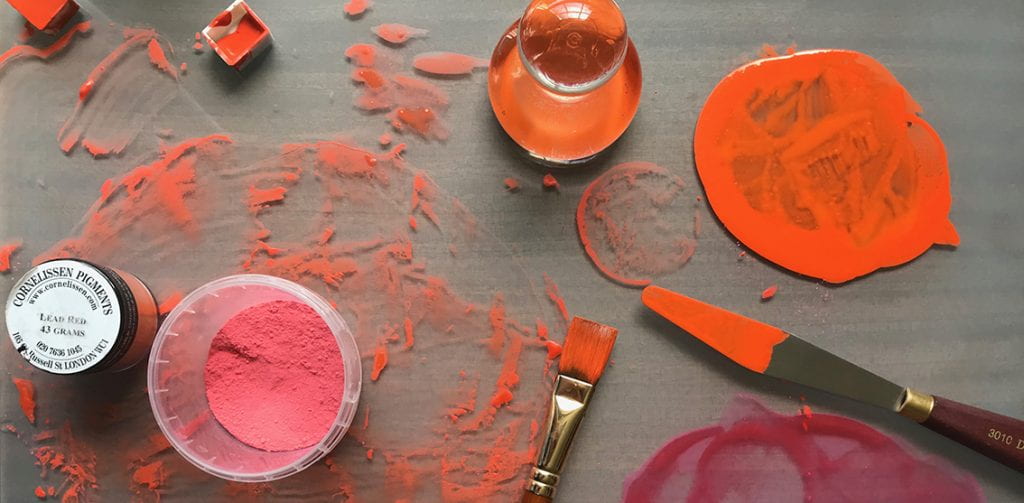A Colour A Day: Week 40
By Ruth Siddall, on 27 December 2020
A Colour A Day: Week 40. 21st-27th December
Jo Volley writes…
This weeks colours are accompanied by Marge Piercy’s poem Colors passing through us.
Purple as tulips in May, mauve
into lush velvet, purple
as the stain blackberries leave
on the lips, on the hands,
the purple of ripe grapes
sunlit and warm as flesh.
Every day I will give you a color,
like a new flower in a bud vase
on your desk. Every day
I will paint you, as women
color each other with henna
on hands and on feet.
Red as henna, as cinnamon,
as coals after the fire is banked,
the cardinal in the feeder,
the roses tumbling on the arbor
their weight bending the wood
the red of the syrup I make from petals.
Orange as the perfumed fruit
hanging their globes on the glossy tree,
orange as pumpkins in the field,
orange as butterflyweed and the monarchs
who come to eat it, orange as my
cat running lithe through the high grass.
Yellow as a goat’s wise and wicked eyes,
yellow as a hill of daffodils,
yellow as dandelions by the highway,
yellow as butter and egg yolks,
yellow as a school bus stopping you,
yellow as a slicker in a downpour.
Here is my bouquet, here is a sing
song of all the things you make
me think of, here is oblique
praise for the height and depth
of you and the width too.
Here is my box of new crayons at your feet.
Green as mint jelly, green
as a frog on a lily pad twanging,
the green of cos lettuce upright
about to bolt into opulent towers,
green as Grand Chartreuse in a clear
glass, green as wine bottles.
Blue as cornflowers, delphiniums,
bachelors’ buttons. Blue as Roquefort,
blue as Saga. Blue as still water.
Blue as the eyes of a Siamese cat.
Blue as shadows on new snow, as a spring
azure sipping from a puddle on the blacktop.
Cobalt as the midnight sky
when day has gone without a trace
and we lie in each other’s arms
eyes shut and fingers open
and all the colors of the world
pass through our bodies like strings of fire.
Colours are from the Liquitex Soft Body Acrylic range on W&N watercolour paper and read from left to right:
Bright Aqua Green
Vivid Orange
Scarlet
Naphthol Crimson
Yellow Orange Azo
Permanent Light Green
Permanent Dark Green

 Close
Close


 Henry Levison inventor of Liquitex.
Henry Levison inventor of Liquitex.










